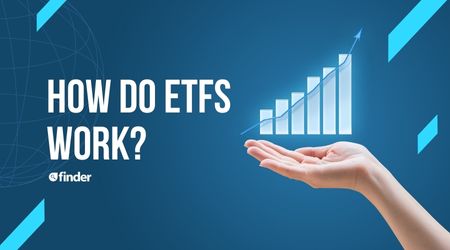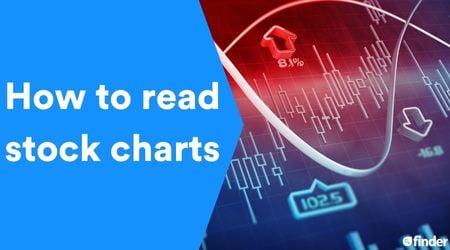Investors building a portfolio for the first time may be wondering how many stocks they should invest in. Diversification certainly plays a role, but it ultimately comes down to the number of assets you’re comfortable monitoring.
How many stocks should I own?
There’s no one-size-fits-all approach to investing in the stock market, but many investors tend to hold 10 to 30 stocks in their portfolio. Investors new to the market may prefer a smaller portfolio of 10 stocks, give or take — while more experienced traders may maintain a portfolio of 30 or more.
In their book, Investment Analysis and Portfolio Management, financial analysts Frank Reilly and Keith Brown suggest the sweet spot lies between 12 and 18 stocks — a range that successfully capitalizes on 90% of the benefits of diversification. Others, like Burton Malkiel, author of A Random Walk Down Wall Street, suggest that investors need closer to 20 stocks to reduce risk by up to 70%.
The more positions you maintain, the more maintenance your portfolio requires, including market research and staying up-to-date on industry news. The bottom line? You need to monitor the performance of everything you purchase. If you’re not willing to keep an eye on it, don’t buy it.
How to invest in more stocks if you don’t have a lot of money
If you’re short on funds and new to the market, there are several investment options with built-in diversification. Each of the following can be purchased through a brokerage account:
- ETFs. Exchange-traded funds are publicly traded funds that track a specific index, sector or industry. The purchase of a single exchange-traded fund adds a healthy dose of diversification to your portfolio, as ETFs contain a variety of stocks from companies within the sector or industry they track.
- Index funds. An index fund is a mutual fund or ETF that tracks a market index. A market index tracks a list of stocks from companies within a specific sector as an indicator of how that sector is performing overall. Index funds offer exposure to an entire index, many of which track hundreds of stocks. In Canada, the most popular index to track is the S&P/TSX Composite. Other popular Canadian indices include the S&P/TSX 60 and the S&P/TSX Venture Composite Index. In the US, the most popular index is the S&P 500. The Russell 2000 is useful for tracking small-cap stocks, while the Dow Jones Industrial Average is useful for tracking large-cap stocks.
- Mutual funds. A mutual fund is a collective investment that allocates money across stocks, bonds and other assets. Mutual funds are professionally managed by fund managers and pool the funds of multiple investors to broaden the fund’s reach and market exposure. Like ETFs, mutual funds contain a basket of assets, offering greater diversification than the purchase of a single stock.
Why it’s risky to invest in a single stock
When you pour all your money into a single stock, the success of your investments hinges entirely on the performance of a single company. While you can earn potentially higher returns, you may also face equally sizable losses.
Think your investments are safe with blue-chip stocks, like Apple, Walmart or Disney? Think again. No company, regardless of sector, industry or time in business, is risk-free. And that’s because all stocks are exposed to company risk and market risk.
Company risk, or unsystematic risk, is the risk associated with investing in a single company. And while it’s typically more of a gamble to invest in startups and small-cap stocks, there are risks to investing in larger companies, too.
Market risk, or systematic risk, applies to all companies, regardless of size, as some events — like natural disasters and political upheavals — have the potential to impact the entire market.
The best way to insulate your portfolio from potential loss is to diversify your investments, holding multiple stocks across a spectrum of industries. It’s impossible to avoid market risk, but by investing in more than one company, you reduce your portfolio’s company risk exposure.
Ways to reduce your investing risk
There are numerous ways to manage your portfolio and reduce the risk of loss.
Rely on a professional
If you need help building a portfolio from scratch, consider a financial adviser. There are numerous investment platforms that offer portfolio management services, but you’ll pay a fee to access the service — typically a percentage of your total assets.
Your adviser will sit down with you to discuss your investment goals and help you determine your risk tolerance. Once your portfolio is funded, your adviser takes care of the rest. You may meet with your adviser once or twice a year to discuss your investments, but you won’t be actively managing your portfolio. This is an option best suited for hands-off investors.
If you do want to manage your investments but would prefer some guidance before you pull the trigger, consider hiring an investment fiduciary. This person can provide occasional guidance and feedback on your portfolio while leaving the buying and selling process in your hands.
Do your research
If you’re eager to wet your feet in the world of investments, open a self-directed brokerage account and build your portfolio yourself. Hand-picking your own stocks means doing your homework, so explore the research tools provided by your trading platform as well as third-party options like free stock screeners and investment newsletters.
Learn how to value a stock before adding it to your portfolio by comparing data metrics like price-to-earnings ratios and free cash flow. And make sure your money is diversified across assets, market sectors and industries to reduce the risk of loss.
Use a robo-advisor
Robo-advisors are digital financial advisers that rely on algorithms to manage the assets in your portfolio. Some brokerages like Wealthsimple offer robo-advisors alongside self-directed brokerage accounts. Others, like CI Direct Investing and Moka, offer robo-advisor services and nothing else.
Robo-advisors operate in much the same way as portfolio management services overseen by human advisers. Your investments are selected for you at the robo-advisor’s discretion and you can monitor your portfolio by logging into the platform.
Bottom line
Small portfolios are easier to manage, but too few stocks can increase your company risk exposure. Ultimately, the ideal number of stocks for your portfolio comes down to how many positions you feel comfortable maintaining.
Explore your investment options across multiple trading platforms to find the account that best meets your needs.
Finder survey: What brokerage platform do Canadians of different ages use to trade equities?
| Response | Gen Z | Gen Y | Gen X | Baby Boomers |
|---|---|---|---|---|
| I do not have a direct brokerage investing account | 36.93% | 38.23% | 47.95% | 56.6% |
| RBC Direct Investing | 13.07% | 6.65% | 7.26% | 5.66% |
| TD Direct Investing | 13.07% | 15.24% | 10.41% | 9.43% |
| Wealthsimple | 13.07% | 17.73% | 10.73% | 1.89% |
| Questrade | 6.25% | 3.32% | 2.84% | 1.26% |
| CIBC Investor's Edge | 5.11% | 4.16% | 3.47% | 4.4% |
| Scotia iTrade | 4.55% | 4.71% | 2.84% | 3.77% |
| BMO InvestorLine | 2.84% | 3.88% | 4.42% | 6.29% |
| Interactive Brokers | 1.14% | 1.39% | 0.95% | 0.63% |
| Qtrade | 1.14% | 0.28% | 1.26% | |
| AvaTrade | 0.57% | 0.55% | 0.63% | |
| Caseara credit union | 0.57% | |||
| National Bank Direct Brokerage | 0.57% | 0.55% | 0.63% | 0.63% |
| Not sure | 0.57% | |||
| Stride Credit Union | 0.57% | |||
| Coinbase | 0.55% | 0.32% | ||
| Desjardins Online Brokerage | 0.55% | 0.63% | 1.26% | |
| Other | 0.55% | 0.32% | 1.26% | |
| Ameritrade | 0.28% | |||
| Binance | 0.28% | |||
| Crypto.com | 0.28% | |||
| Investia | 0.28% | |||
| Koho | 0.28% | |||
| None | 0.28% | 0.32% | ||
| Assante | 0.32% | |||
| Assante wealth | 0.32% | |||
| Financial representative | 0.32% | |||
| HSBC | 0.32% | |||
| IG Wealth | 0.32% | |||
| IGSI | 0.32% | |||
| Mckenziecorp | 0.32% | |||
| Nothing | 0.32% | |||
| Quadrus | 0.32% | |||
| SunLife | 0.32% | |||
| Swiss Franc GMBH | 0.32% | |||
| TD Webbroker | 0.32% | |||
| UNI | 0.32% | |||
| Wellington West | 0.32% | |||
| World Financial Group | 0.32% | |||
| assante | 0.32% | |||
| Alterna savings | 0.63% | |||
| Bitcoin | 0.63% | |||
| Edward Jones | 0.63% | |||
| Edward jones | 0.63% | |||
| Fidelity | 0.63% | |||
| Ig | 0.63% | |||
| Investor's Group | 0.63% | |||
| Investors Group | 0.63% | |||
| Queensbury investments | 0.63% | |||
| Simplii | 0.63% | |||
| commonwealth joint | 0.63% |
Frequently asked questions
More on investing

How do ETFs work?
Your guide to how ETFs work and whether this type of investment is right for you.
Read more…
How to read stock charts
Learning how to read stock charts and recognize chart patterns can unlock your success as a trader.
Read more…
What are stocks?
Owning a stock means you own part of a company and can potentially grow your wealth. But there is a risk of loss.
Read more…More guides on Finder
-
How to buy Raytheon Technologies (RTX) stocks
Steps to owning and managing Raytheon Technologies Corp, with 24-hour and historical pricing before you buy.
-
How to buy Gildan Activewear (GIL) stocks
Steps to owning and managing Gildan Activewear Inc., with 24-hour and historical pricing before you buy.
-
Best renewable energy stocks
These are the best renewable energy stocks to buy now in Canada.
-
Best stocks to buy right now in Canada
Finder’s unique algorithm found the 20 best TSX stocks to buy right now.
-
How to buy IL Makiage stock in Canada when it goes public
Everything we know about the IL Makiage IPO plus information on how to buy in.
-
How to buy ByteDance stock in Canada when it goes public
Everything we know about the ByteDance IPO plus information on how to buy in.
-
How to buy Auvik Networks stock in Canada when it goes public
Everything we know about the Auvik Networks IPO plus information on how to buy in.
-
How to buy goPuff stock in Canada when it goes public
Everything we know about the goPuff IPO plus information on how to buy in.
-
How to buy Universal Music Group (UMG) stock from Canada
If you live in Canada, you need a broker that provides access to foreign investments to buy Universal Music Group stock.
-
How to invest in the S&P 500 in Canada
Find out how to invest in the S&P 500 in Canada—one of the world’s most popular stock indices—to diversify your portfolio.
